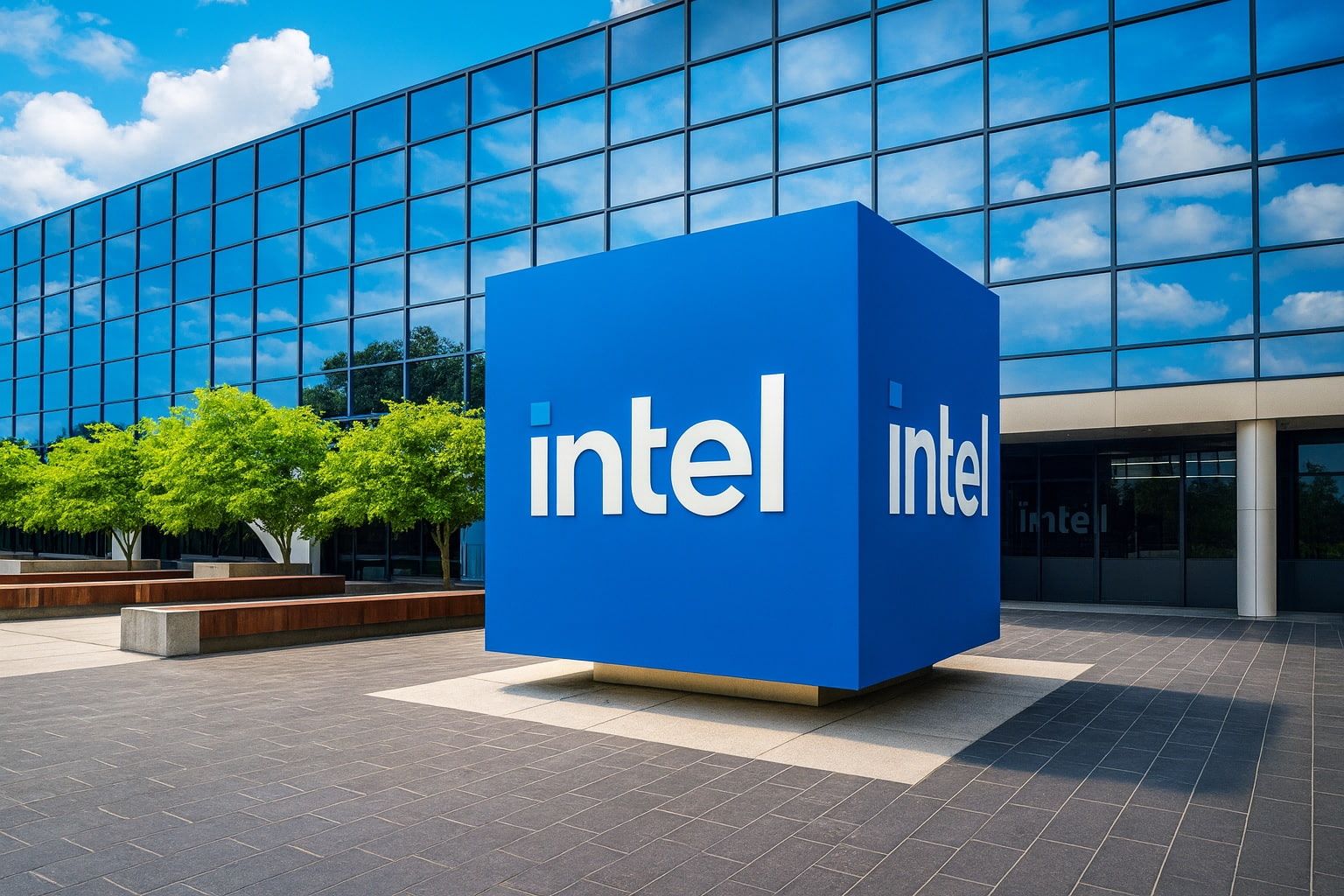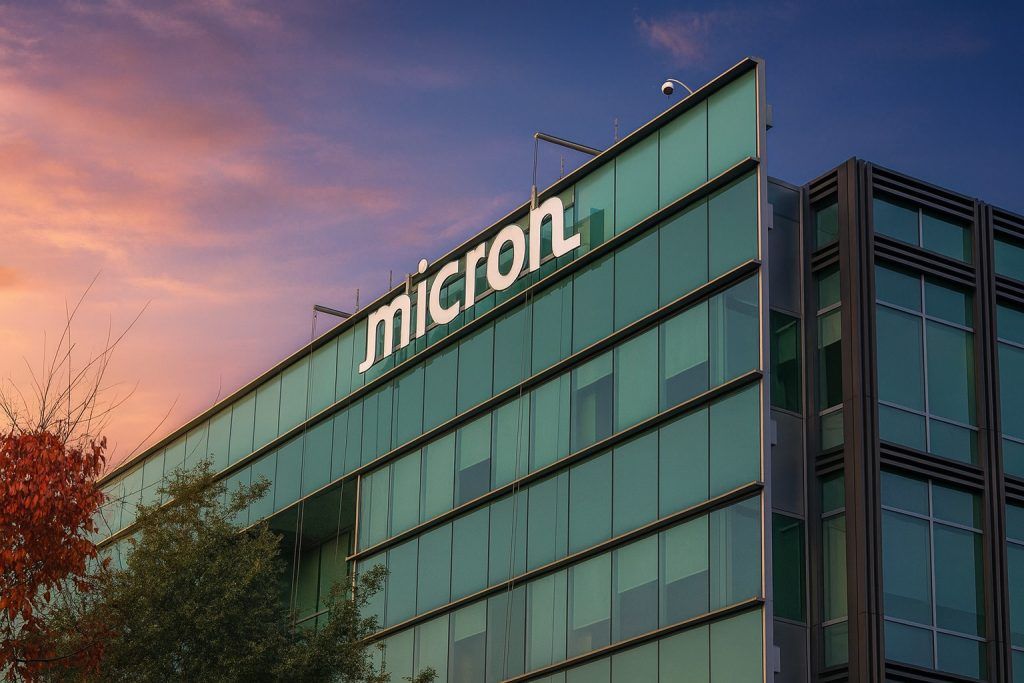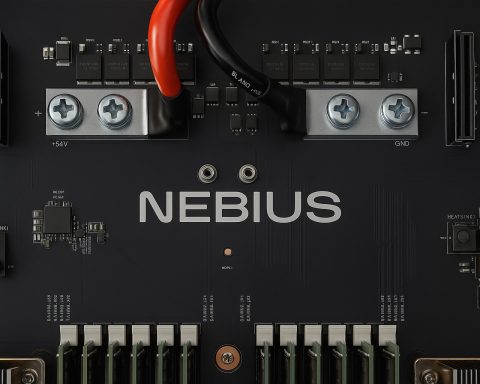Intel stock (NASDAQ: INTC) took a breather from its blockbuster 2025 rally on Thursday, closing at $35.91, down about 5.2% on the day and roughly 15% below its recent 52‑week high of $42.48 set in late October. [1]
The drop came as chipmakers and mega‑cap tech sold off broadly, and as fresh headlines raised new questions about Intel’s role in the artificial‑intelligence hardware boom that has powered much of its nearly 90% year‑to‑date surge. [2]
Below is a complete rundown of what moved Intel stock today, November 13, 2025, and what it could mean for investors watching INTC.
Intel stock today: key numbers at the close
As of the closing bell on November 13, 2025:
- Closing price: $35.91
- Daily move: -$1.98 (-5.23%)
- Extended hours (approx.): ~$36.01, +0.28% vs. the close
- Today’s trading range: roughly $35.45 – $37.31
- Volume: ~95 million shares (slightly below average volume of ~103 million)
- 52‑week range: $17.67 – $42.48
- Market cap: about $170–$175 billion (data providers differ slightly)
- Consensus 12‑month price target: ~$34.84, implying little upside from current levels
- Consensus rating: “Reduce” / weak Hold (2 Buy, 23 Hold, 8 Sell) [3]
Despite today’s drop, Intel shares are still up ~87.4% year‑to‑date and 52% over the last 12 months, making it one of 2025’s most dramatic large‑cap turnarounds. [4]
Why Intel stock dropped today
1. Sector‑wide chip and mega‑cap tech sell‑off
Today’s pressure on Intel wasn’t happening in isolation:
- The S&P 500 fell about 1.1% and the Nasdaq 100 dropped around 1.6%.
- A Nasdaq/Barchart market recap highlighted weakness in chipmakers, with ARM and Broadcom down more than 4–5%, and Intel and Lam Research off more than 3%, alongside declines in Nvidia, AMD and other semiconductor names. [5]
In other words, INTC was caught in a broader de‑risking move out of AI‑heavy tech after months of massive gains across the sector.
A separate StockStory/TradingView note framed the move as a classic “profit‑taking rotation” out of high‑flying AI beneficiaries:
- Investors are “re‑evaluating the high valuations of stocks that benefited from the artificial intelligence boom,” with Intel cited as falling about 4.9% in afternoon trading alongside Micron, Seagate, Western Digital and Broadcom. [6]
The takeaway: macro jitters + valuation anxiety across AI plays fueled broad selling in semis, and Intel, after an ~87% YTD run, was an obvious profit‑taking candidate.
2. OpenAI snub adds an AI‑hardware headline hit
A particularly eye‑catching story today came from GuruFocus:
- Intel shares “fell by about 6.1%” as reports surfaced that the company has been excluded from OpenAI’s significant AI hardware investments.
- The article says OpenAI’s trillion‑dollar hardware roadmap favors other suppliers—including GPUs and Google’s TPUs—and explicitly notes that OpenAI prefers TSMC’s advanced manufacturing over Intel’s foundry services for now. [7]
For investors, the optics aren’t great:
- Intel has aggressively marketed itself as an end‑to‑end AI player (CPUs, accelerators, software and foundry), and
- It has secured major backing from Nvidia ($5 billion stake), SoftBank ($2 billion stake), and the U.S. government (multi‑billion‑dollar funding) to accelerate its manufacturing roadmap. [8]
Seeing OpenAI choose other vendors for its next‑gen AI infrastructure, at least according to these reports, raises questions about Intel’s near‑term relevance in the most visible part of the AI race—even if OpenAI is just one of many potential customers.
3. Hedge‑fund rotation: Appaloosa exits Intel, pivots to AMD
On the institutional‑money front, a Seeking Alpha news item today highlighted that David Tepper’s Appaloosa Management exited its Intel position in Q3 while opening a new stake in AMD, among its top quarterly trades. [9]
While those trades happened months ago, the fresh headline reinforces the narrative that some high‑profile investors see better AI upside and execution at rivals like AMD, even after Intel’s recent turnaround.
4. Intel underperforms peers in Thursday’s session
A MarketWatch “data news” recap underscored just how rough the day was for INTC:
- Shares slid 5.23% to $35.91,
- Leaving the stock about 15.5% below its 52‑week high of $42.48, and
- Underperforming key competitors and the broader tech indices. [10]
Combine that underperformance with the OpenAI headline and profit‑taking in AI winners, and you get the recipe for today’s outsized pullback.
Fresh research: earnings estimate cuts and valuation doubts
1. Zacks / Yahoo Finance: huge EPS cuts for 2025–26
A Zacks note, republished via Yahoo Finance and dated today, pointed to sharp downward revisions in Intel’s earnings outlook:
- 2025 EPS estimates have dropped about 67% over the past year to just $0.31 per share.
- 2026 EPS estimates are down ~62% to roughly $0.62 per share. [11]
Zacks argues that such large negative estimate revisions are often a bad sign for future stock performance, and suggests that investors should treat INTC with caution despite its huge price rally.
2. “Intel’s incredible rally might be over” – rating trims
On the commentary side, a new Seeking Alpha article published today carries the headline that Intel’s “incredible rally might be over,” with the author downgrading the stock to a Hold rating:
- The core argument: Intel’s share price has run far ahead of its fundamentals, with profitability and cash‑flow improvement still fragile and the foundry & AI roadmaps facing execution risk. [12]
That dovetails with a broader wave of cautious research:
- Bank of America previously downgraded Intel to “Underperform”, warning that its recent ~$80 billion market‑cap gain reflects optimism about balance‑sheet repair and foundry ambitions more than “material operational improvements,” and maintaining a $34 price target below recent prices. [13]
- HSBC cut Intel to “Reduce” in October, even while nudging its target up to $24, citing competitive pressures and concerns that the stock is trading near its 52‑week high with overbought technicals. [14]
According to MarketBeat’s analyst compilation:
- There are 8 Sell, 23 Hold and just 2 Buy ratings on Intel.
- The blended 12‑month target is about $34.84, slightly below today’s close, implying that Wall Street as a whole does not see big upside from current levels. [15]
3. Simply Wall St: “reassess Intel after an 87% surge”
New today, a Simply Wall St valuation deep‑dive urges investors to stop and reassess:
- Intel’s share price is up 87.4% YTD and 52.0% over the past year.
- On their DCF model, they estimate an intrinsic value of about $14.69 per share, implying the stock trades at a roughly 158% premium to that fair‑value figure—i.e., significantly overvalued by that metric.
- However, on a price‑to‑sales basis, Intel’s P/S of ~3.38x looks cheaper than peers (industry ~4.7x, some competitors around 15x), and their “fair” P/S ratio of 5.65x would actually suggest upside. [16]
Their verdict: Intel scores 3/6 on their valuation checks and presents a mixed picture—expensive on cash‑flow‑based fair value, less stretched on sales multiples, and ultimately dependent on which narrative an investor believes about future AI and foundry execution.
Fundamental backdrop: Intel after its Q3 2025 earnings beat
Today’s price action sits on top of a very eventful few months for Intel.
Q3 2025 results: modest growth, big funding, and AI ambitions
On October 23, 2025, Intel reported Q3 2025 results that beat expectations and sparked a sharp rally:
- Total net revenue: $13.7 billion, up 3% year‑over‑year.
- GAAP diluted EPS: $0.90 vs. ‑$3.88 a year earlier (helped by gains from asset sales and government support).
- Non‑GAAP EPS: $0.23, versus ‑$0.46 in Q3 2024. [17]
By segment, Intel reported: [18]
- Client Computing Group (PC chips):
- Revenue $8.5 billion, +5% YoY, driven by a Windows refresh cycle, stronger PC total addressable market (TAM) and new Lunar Lake / Arrow Lake launches.
- Data Center & AI (DCAI):
- Revenue $4.1 billion, down 1% YoY but up sequentially, helped by improved mix and returning enterprise demand.
- Intel Foundry:
- Revenue $4.2 billion, down 2% YoY, as the company ramps its 18A process node and repositions its manufacturing strategy.
Crucially, Intel’s Q3 report also underscored a massive capital and policy tailwind: [19]
- An agreement with the U.S. government for $8.9 billion in support, with $5.7 billion received in the quarter, to expand advanced U.S. chip manufacturing.
- A $5 billion equity investment from Nvidia and $2 billion from SoftBank, reflecting big‑name confidence in Intel’s foundry and manufacturing roadmap.
- The unveiling of Panther Lake (Intel Core Ultra Series 3) and Clearwater Forest (Xeon 6+), both on Intel 18A, plus a fully operational Fab 52 in Arizona producing cutting‑edge 18A wafers.
Q4 2025 guidance
For Q4 2025, Intel guided to: [20]
- Revenue: $12.8–$13.8 billion
- GAAP EPS: about ‑$0.14
- Non‑GAAP EPS: about $0.08
- Non‑GAAP gross margin: ~36.5%
Analysts, on average, still expect Intel to post a full‑year 2025 loss of around ‑$0.11 per share, before returning to positive EPS (around $0.56) in 2026. [21]
Credit and execution risk still loom
On the risk side, Fitch downgraded Intel’s credit rating back in August, citing:
- Demand challenges,
- The need to ramp PC shipments and reduce debt to regain prior ratings, and
- Intensifying competition in PCs and data‑center chips from Qualcomm and AMD, even while acknowledging Intel’s still‑strong PC and server footprint. [22]
Meanwhile, Reuters noted after Q3 that although Intel’s stock had rebounded more than 90% in 2025 through late October, yields on its 18A process node are not expected to reach “acceptable levels” until 2027, underlining how long the foundry turnaround may take. [23]
Institutional flows: smart money both buying and rotating
Not all big investors are heading for the exits.
New SEC filings highlighted today by MarketBeat show that:
- KBC Group NV increased its Intel stake by about 2.6% in Q2, to roughly 1.49 million shares, worth around $33.4 million at the time of filing. [24]
- A separate piece noted that Los Angeles Capital Management and a number of smaller advisory firms also added or increased Intel positions. [25]
Across the shareholder base, data compiled by MarketBeat show that about 64.5% of Intel’s stock is held by institutions, underscoring how heavily owned INTC is by funds and asset managers. [26]
At the same time, today’s coverage of David Tepper’s Appaloosa exiting Intel and buying AMD shows that institutional opinion is far from unanimous, especially regarding which chipmakers are best positioned for the next leg of the AI cycle. [27]
How today’s drop fits into Intel’s 2025 story
Zooming out:
- Intel shares more than doubled off their lows into late October, briefly hitting an 18‑month high and outperforming Nvidia and AMD year‑to‑date, according to Reuters. [28]
- That powerful rally triggered a wave of caution:
- Bank of America: “valuation is stretched on challenged fundamentals,” Underperform, $34 target. [29]
- HSBC: downgraded to Reduce, flagging overbought conditions and competitive risks. [30]
- Options and valuation commentators have described Intel as rising “too far, too fast,” highlighting moral‑hazard concerns around heavy government support and pointing out that much of the share‑price gain reflects policy and funding, not yet durable earnings power. [31]
From that perspective, today’s 5% pullback looks less like a shock and more like a textbook digestion of an enormous rally, triggered by:
- A sector‑wide AI/tech de‑risking,
- A symbolic AI setback via the OpenAI hardware story, and
- Continued skepticism from analysts and valuation models.
What Intel stock investors should watch next
Looking ahead from today’s move, several themes matter more than a single red day on the chart:
- Foundry & 18A execution
- Intel’s entire long‑term bull case rests heavily on becoming a leading foundry, with 18A positioned as a competitive process for both its own chips and external customers.
- Watch for new foundry customer wins, clarity on yield improvements, and whether big AI and cloud players (beyond Nvidia’s strategic stake) actually commit high‑volume wafers to Intel fabs. [32]
- AI PC and server demand
- Q3 showed a PC recovery and early traction for Intel’s AI‑enhanced client chips like Panther Lake, plus sequential improvements in DCAI. [33]
- Investors will watch whether this translates into sustained revenue growth and better margins, or whether competitive pressures from AMD, Qualcomm and others erode the gains. [34]
- AI infrastructure design wins (or snubs)
- Today’s OpenAI headline underscores how sensitive sentiment is to who chooses whose chips. Continued news of large‑scale AI deals that exclude Intel would reinforce the bear case; any surprise design wins would help the bull case. [35]
- Earnings revisions and guidance updates
- With 2025–26 EPS estimates already cut sharply, further downward revisions could pressure the stock, while any upward surprises to guidance would be a powerful signal that the turnaround is ahead of expectations. [36]
- Macro environment and risk appetite
- Today’s market action shows how quickly higher yields, Fed rhetoric and political noise (including the recent U.S. government shutdown saga) can hit growth‑and‑AI‑heavy names like Intel. [37]
Is Intel stock a buy, hold or sell after today? (Big‑picture view, not advice)
Whether today’s drop is a buying opportunity or a warning sign depends on which side of the Intel debate you find more convincing.
The bull case in a nutshell
Supporters of Intel stock point to:
- A real, measurable turnaround in results: modest revenue growth, a swing back to positive EPS, improving PC demand, and sequential progress in Data Center & AI. [38]
- Massive external validation and funding:
- Billions from the U.S. government,
- $5B from Nvidia and $2B from SoftBank,
- And growing political pressure for domestic chip capacity—all of which could provide a long runway for its foundry ambitions. [39]
- A stock that, despite being up ~87% YTD, still trades at a P/S multiple lower than many peers, and has earnings expected to swing from a 2025 loss to positive EPS in 2026. [40]
- Strong institutional ownership (~65%), with some funds incrementally adding shares even at higher prices. [41]
From this angle, pullbacks like today’s can look like chances to accumulate a key U.S. strategic asset with unique scale, government support and AI upside.
The bear case in a nutshell
Skeptics counter with several serious concerns:
- Earnings power remains weak: EPS estimates for 2025 and 2026 are still very low after steep downward revisions, and Intel is guided to post a loss for 2025 as a whole. [42]
- Valuation vs. fundamentals:
- On DCF assumptions (Simply Wall St), Intel screens as heavily overvalued, trading at more than 150% above estimated fair value.
- Big houses like Bank of America and HSBC see the recent rally as pricing in improvements that may not materialize, hence Underperform/Reduce ratings and relatively low targets. [43]
- Execution and balance sheet risk: Fitch’s downgrade, continued 18A yield challenges and the sheer scale of Intel’s capex plans mean very high execution risk, even with government aid. [44]
- Competitive and perception risk in AI: The OpenAI hardware decision and high‑profile investors rotating into rivals like AMD feed the perception that Intel is not yet a first‑tier winner in the AI boom, despite its intense marketing push. [45]
From this view, today’s drop is a symptom, not a buying signal—evidence that the market is starting to question how much of Intel’s turnaround is already in the price.
How to think about Intel after today (and a quick disclaimer)
Objectively:
- Intel stock now trades very close to its consensus 12‑month target, with analysts split between Hold and Sell and only a handful on the Buy side. [46]
- The company is mid‑turnaround—Q3 showed genuine progress, but long‑term success still hinges on executing an enormously complex foundry and AI strategy in a brutally competitive industry.
If you’re considering Intel:
- Treat today’s headlines as inputs into a bigger thesis, not stand‑alone signals.
- Stress‑test your assumptions about AI adoption, foundry share, government support and capital intensity.
- And always match any position size and risk to your own time horizon, diversification, and risk tolerance.
This article is for informational purposes only and does not constitute financial advice or a recommendation to buy or sell any security. Always do your own research or consult a licensed financial adviser before making investment decisions.
References
1. www.marketbeat.com, 2. www.nasdaq.com, 3. www.marketbeat.com, 4. simplywall.st, 5. www.nasdaq.com, 6. www.tradingview.com, 7. www.gurufocus.com, 8. www.intc.com, 9. seekingalpha.com, 10. www.marketwatch.com, 11. finance.yahoo.com, 12. seekingalpha.com, 13. www.investing.com, 14. www.investing.com, 15. www.marketbeat.com, 16. simplywall.st, 17. www.intc.com, 18. www.intc.com, 19. www.intc.com, 20. www.intc.com, 21. www.marketbeat.com, 22. www.reuters.com, 23. www.reuters.com, 24. www.marketbeat.com, 25. www.marketbeat.com, 26. www.marketbeat.com, 27. seekingalpha.com, 28. www.reuters.com, 29. www.investing.com, 30. www.investing.com, 31. www.sahmcapital.com, 32. www.intc.com, 33. www.intc.com, 34. www.reuters.com, 35. www.gurufocus.com, 36. finance.yahoo.com, 37. www.nasdaq.com, 38. www.intc.com, 39. www.intc.com, 40. simplywall.st, 41. www.marketbeat.com, 42. finance.yahoo.com, 43. simplywall.st, 44. www.reuters.com, 45. www.gurufocus.com, 46. www.marketbeat.com










